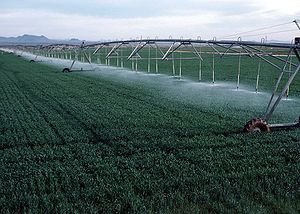As much as 50 percent of all food produced around the world is wasted, according to a report published last week by the Institution of Mechanical Engineers. Heartbreaking as it is to think of wasting food, the summary points out that:
Wasting food means losing not only life-supporting nutrition but also precious resources, including land, water and energy.
Remember that land/water/energy connection we made last year? Read back, it was interesting.
About 70 percent of the water humans use each year goes towards agriculture, according to the report. The level of use is predicted to rise over the coming decades. In Colorado, more than 80 percent of our water goes towards agricultural production, but folks are talking about a decrease in water for agriculture as populations grow. In Keeping Water on the Farm Jerd Smith writes:
In 2004, the [Colorado Water Conservation Board] completed its Statewide Water Supply Initiative, identifying for the first time how much water each of Colorado’s eight major river basins controlled, how that water was used, and how much water each region would need in the future for cities, farms and industry. The study revealed dramatic shortages among fast-growing cities. With nearly all of Colorado’s water supplies already claimed, those cities are looking at nearby farms to help bridge the gaps in their water supply portfolios. In the South Platte Basin, where the Schafers farm, nearly one-third of irrigated farms and ranches will be dried up in the next 30 years if Colorado cannot find better ways to partner with farms so water can be shared, rather than removed permanently. The same scenario is likely to play out in other parts of the state. In the Arkansas Basin, for instance, some 73,000 irrigated acres could be dried up.
Read the Fall 2012 issue of Headwaters magazine, full of stories about water for agriculture in Colorado. Although the question of water for agriculture may not be the same in Colorado as it is worldwide, Colorado’s producers must adapt to a more tenuous water supply, as do those across the globe. Some of the solutions may be similar such as more efficient irrigation technologies, planting different crops and different methods of tilling. Read more about the Ever-Evolving Farmer in Josh Zaffos’ article in Headwaters.


 Print
Print